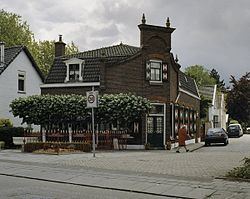Demonym(s) Ambachter Postcode 3340–3344 Area 11.99 km² Team ASWH | Elevation −1 m (−3 ft) Time zone CET (UTC+1) Website www.h-i-ambacht.nl Local time Thursday 5:59 PM Area code 078 | |
 | ||
Weather 11°C, Wind NW at 26 km/h, 64% Humidity | ||
Triple xxx voncken offride hendrik ido ambacht holland
Hendrik-Ido-Ambacht ( pronunciation ) (population: 29,147 in 2014) is a town and municipality in the western Netherlands. It is located on the island of IJsselmonde, and borders with Zwijndrecht, Ridderkerk, and the Noord River (with Alblasserdam and Papendrecht on the other side).
Contents
- Triple xxx voncken offride hendrik ido ambacht holland
- Map of Hendrik Ido Ambacht Netherlands
- Name
- History
- References
Map of Hendrik-Ido-Ambacht, Netherlands
The jurisdiction of the municipality covers an area of 11.90 km2 (4.59 sq mi) of which 1.23 km2 (0.47 sq mi) is water. The municipality comprises no other population centres.
Name
Until 1855, the town was known as Hendrik-Ido-Schildmanskinderen-Ambacht en de Oostendam. Then it merged with Sandelingen-Ambacht and its full name for a period of time was said to be Hendrik-Ido-Oostendam-Schildmanskinderen-Groot-en-Klein-Sandelingen-Ambacht. This used to be the longest name of any town in the Netherlands.
Dutch topographic map of the municipality of Hendrik-Ido-Ambacht, June 2015
History
The area has been populated from circa the year 1000 CE. Agriculture and animal husbandry were the only means of existence for many centuries. All lands were owned by or in control of the nobility of Dordrecht. Not until the Eighty Years' War some industrial activities began to appear along the river dike. Furthermore, horticulture and flax growing also developed.
Because of the rapid industrial growth in Germany and the daily tides, two citizens of Hendrik-Ido-Ambacht started a ship breaking yard which grew into an industry resulting in the town becoming worldwide known as the "ship breaking village".
The establishment of industries in the region changed the centuries-old seasonal labour to permanent work opportunities with higher wages. Only a few monumental farms and buildings, including the 14th century Reformed Church, remain as a reminder of its historic past.
